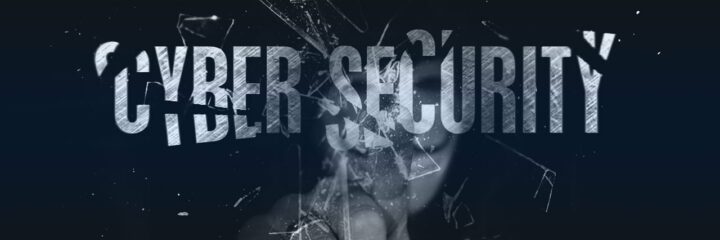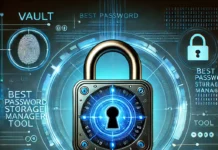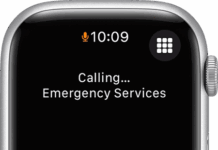Do you think your company is protected from cyber threats? Think again. The truth is that many business owners have a false sense of comfort and safety. They assume that because they’ve installed antivirus software, rely on an IT provider, and use firewalls, they’ve got nothing to worry about. But this illusion can be really dangerous for them.
Cybercriminals evolve faster than most businesses can keep up, and they exploit vulnerabilities as soon as they arise. Being overconfident could damage your business more than you think, which is why you need to beware of the threats out there and ensure your cybersecurity policies and measures are watertight. But before you can do that, you must first separate fact from fiction. Let’s look at some of the most common myths that you need to stop believing as soon as possible to save your business from downfall.

Myth No. 1: Hackers Only Target Large Businesses
Many companies don’t take precautions against cyber threats because they falsely believe they won’t fall victim to them. If you think you are not as exposed compared to your peer organizations, you couldn’t be more wrong. This isn’t just a fallacy; it also creates a culture of complacency that leaves you vulnerable.
The facts show that cyberattacks hit 80% of businesses, regardless of whether they are SMEs or larger companies. The only thing that matters is whether cybercriminals are able to spot weaknesses in their systems. If they do, they won’t hesitate to act. Assume you are a target(because you really are), and no matter the type of your business, do what it takes to protect yourself from threats.
Myth No.2: Strong Passwords Alone Are Enough to Keep You Safe
Sure, strong passwords are crucial for your online safety. Using a combination of uppercase and lowercase letters, special characters and numbers, and avoiding dictionary words, or predictable sequences like 1234 does make a ton of difference. So does using a business password manager, which can eliminate the headache of coming up with unique passwords for all your accounts.
But relying just on them alone and thinking you’re protected is like locking the front door of your house but leaving the window open. There are stories from the past where credentials were stolen even when users had strong passwords in place, proving that hackers use sophisticated tactics to bypass them. So, you must have another security measure in place, such as MFA, or multi-factor authentication, because it will make it harder for malicious actors to access your data.
Myth No.3: Cybersecurity Is Someone Else’s Job
It should feel easy to figure out who is responsible for security, but more often than not, things get quite complicated. IT points to Compliance, Compliance to Security Operations, which then points to the vendor, and that’s what creates a lot of confusion. This is especially common with large companies, which split responsibilities across highly specialized teams. When there’s no ownership or clear boundaries, each team can assume that someone else is handling cybersecurity. The consequence? Critical responsibilities often fall through the cracks.
However, effective cybersecurity is everyone’s responsibility, because everything within the organization has security implications. So, make sure to lay out ownership as clearly as possible, because this will help everyone know who has what handled. Document everything from who owns which configurations, who monitors outcomes, who approves changes, and so on, because this will go a long way in creating multi-level protection within the company, combating external and internal risks alike.
Myth No.4: Antivirus Software Will Protect Your Company from Everything
Antivirus software is a tool (and can be a helpful one), not a magic solution. While it can catch common malware, it’s not strong enough to stop insider threats, phishing attacks, zero-day attacks, and so on. You need more than that if you want to stand a chance against the sophisticated tactics that cybercriminals use.
Consider a layered security approach that incorporates endpoint detection and response, firewalls, and intrusion detection systems. And don’t forget about software updates. An outdated system that hasn’t been updated in a long time is often the main culprit in data breaches that cost millions in damages, which is why you should not postpone those updates. They include patches that can help fix security vulnerabilities, thus safeguarding your business from risks.
Myth No.5: If It Worked Once, It Will Work Again

Often, decision-makers think that since no data breaches have occurred in the past, none will occur in the future either. While this is somehow a relatable logic, it doesn’t mean it is right. In fact, think of it as investing in Yahoo! these days, only because in 1999 it was great. It just doesn’t make sense. The cyberthreat landscape changes faster than companies can keep up with – it’s a very real cat-and-mouse game, meaning if you aren’t moving forward, you’re going backward without a doubt. There’s no other way around it.
The thing about security is that it isn’t a set-it-and-forget-it problem. What worked in the past may not work again, simply because cybercriminal tactics evolve —and so should your defenses. Ultimately, effective cybersecurity is a cycle of anticipation, adaptation, and action, and you want to take it very seriously.
It’s Time to Leave Cybersecurity Myths Behind
Misconceptions aren’t just innocent mistakes; they are a liability in today’s landscape, where threats are everywhere. If you’ve believed any of these myths until now, that needs to change if you want your business not to be badly exposed and less resilient. You may have realized by now that the question isn’t whether cybercriminals will come after your company— but when. And when that day comes, are you prepared? Will your defenses stand firm and protect your data even if hackers come up with the most sophisticated tactics?
Sure, establishing robust cybersecurity doesn’t happen overnight, and you’ll need to invest in various solutions to ensure the best protection. But every step you take starting from today will make a difference. So, don’t wait for a breach to expose the gaps. Take action and make cybersecurity your organization’s strongest asset.


















